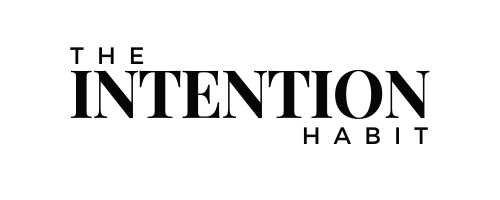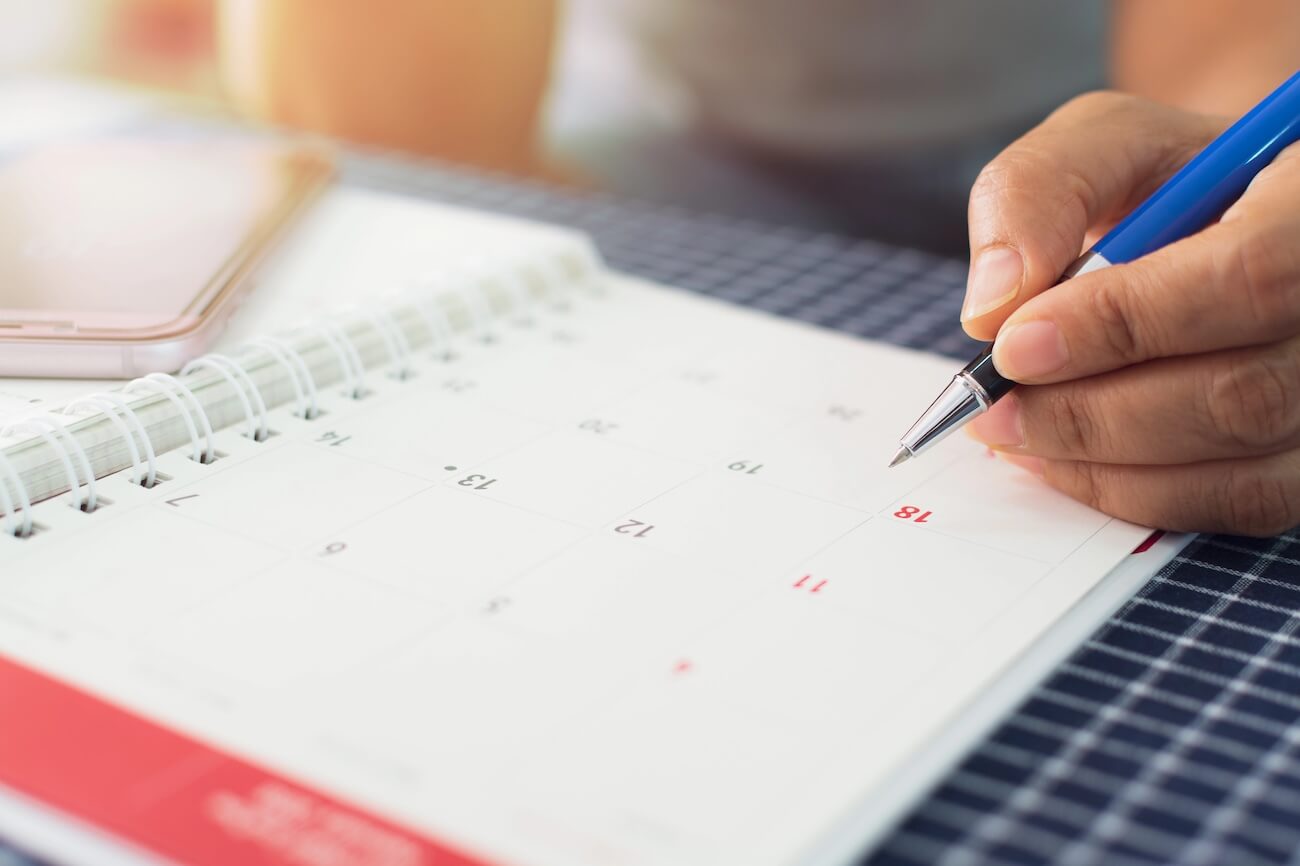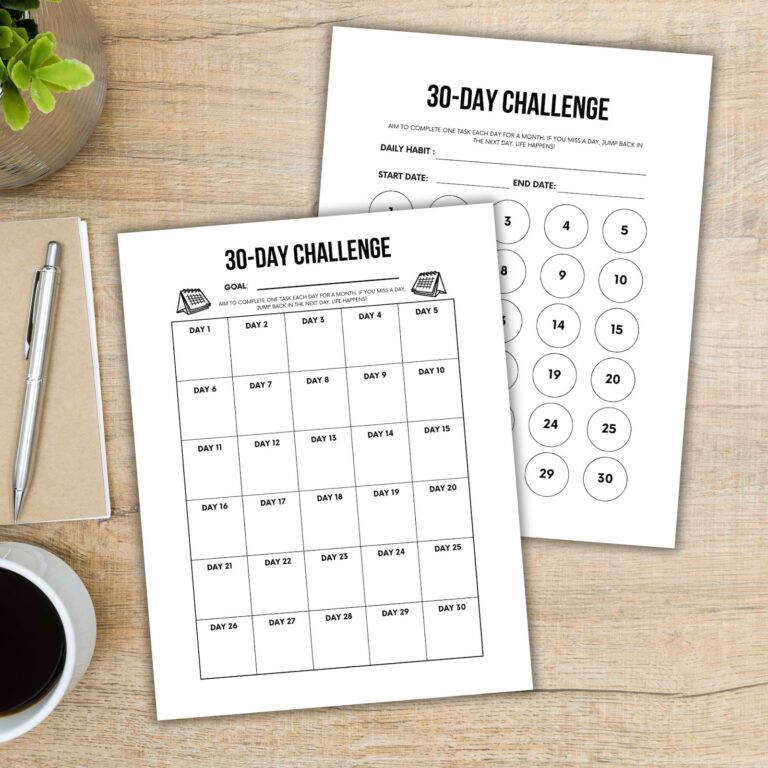Kickstart Your Year: The Ultimate Guide to New Year Planning
New year, new beginnings… new planning system? Heck yeah! There’s no doubt that a new year often brings with it some high hopes about change and improvement, but these hopes remain exactly that… hopes, without a plan to set them in motion! New year planning is the key to kicking off on the 1st of January ready to conquer the year ahead.
As the new year begins, it brings with it the perfect time to reflect on the past, celebrate achievements, and plan ahead. A well-structured planner is a great way to set your goals, create an action plan, and manage your time effectively, but how that planner looks is different for each of us.
In this guide, we will break down step-by-step processes for choosing a new year planning method, setting up your planner or system, the different methods of organisation, and cover tips to keep you on track for the entire year.
Why New Year Planning Matters
The start of a new year is far more than just an opportunity to make resolutions—it’s a chance to establish the foundation for a successful year and set your intentions for how you want your year to go.
Planning helps you set clear, specific goals, manage your time, and maintain focus so that the hard work you put in leads you in the right direction.
Having a well-thought-out plan reduces stress, increases productivity, and provides structure to your daily, monthly, and yearly activities – in your personal life and in your career.
- Prioritise effectively by identifying your most important goals.
- Reduce stress by breaking big goals into manageable steps.
- Stay on track by keeping your goals visible and measurable.
Planning is the first step toward achieving your new year goals.
The Essential Guide To New Year Planning
Before you can get started with planning for a new year, you need to have your systems in place and that can come with a bit of trial and error. This guide will cover systems and processes to get you set up for a fantastic year ahead.
Step 1: Start With Reflection
Before diving into your plans for the upcoming year, it’s important to take a moment to reflect on last year (or the current year if you’re getting set up early like I always do).
- What were your biggest accomplishments?
- What challenges did you face?
- Did you set New Year’s resolutions, and how did they turn out?
By evaluating your experiences from the past year, you can better understand what worked, what didn’t, and where you want to focus your efforts this time around.
- Create a list of last year’s wins: Take note of any major events, achievements, or personal victories.
- Acknowledge setbacks: Identify areas where you faced difficulties and think of new ideas for overcoming them this year.
- Identify growth areas: Ask yourself what small changes could make a big difference in the upcoming year. This reflection will help you set more targeted and achievable goals.
This is also the time to reflect on your planning system and whether or not it worked. Consider whether you felt organised or if you struggled to keep track of all your to-dos and plans. Did you buy a pretty paper planner and barely wrote a thing in it? This is helpful to know now!
Step 2: Choosing Your Organisational Method
New year planning doesn’t only refer to paper planners or diaries. Yes, they are an amazing tool for many people, but they aren’t the only tool that can help you plan your time effectively. And most importantly, a paper planner might not be the ideal solution for you.
It’s important to find a system that works best for your lifestyle. Here are some popular formats:
Traditional Paper Planners
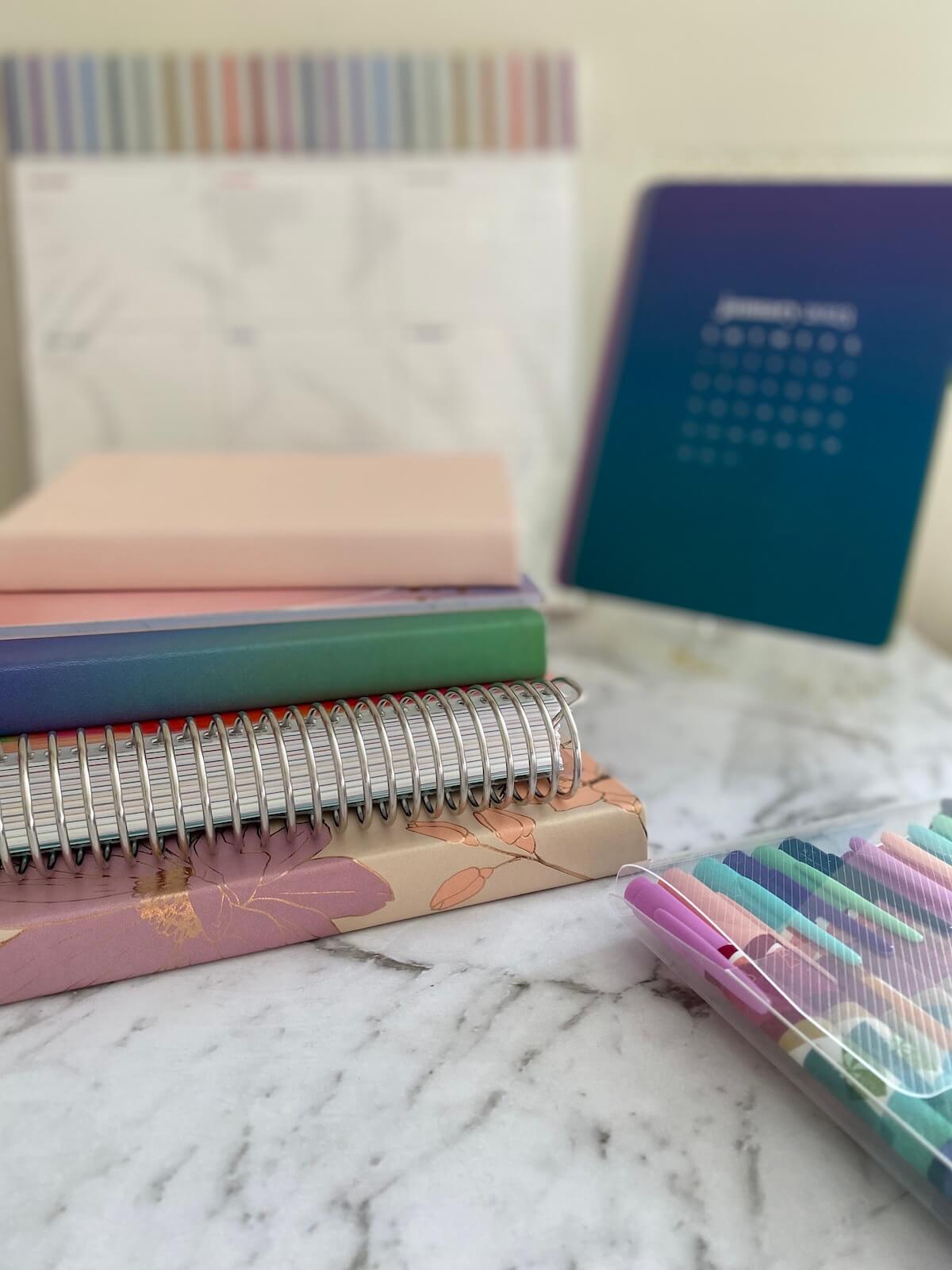
Paper planners are a classic choice and provide a tangible way to map out your year. Writing down goals, deadlines, and to-do lists can improve memory retention and add a personal touch to your planning process.
Even within the planner sphere, there are variations – daily, monthly, weekly, and quarterly. There are also speciality planners for teachers or for business owners or nurses, as just a few examples.
- Great for: Those who enjoy writing things down by hand and want to create a physical record of their progress.
- Best way to use: Add major events, schedules, tasks, and action steps into manageable daily, weekly, and monthly sections.
I have always been a daily planner person because I like to have daily to-do lists and daily schedules, with plenty of space for both. It took me quite a few years to find a format that works for me. As my work committments have evolved, I have found myself taking more of a hybrid approach, using both a paper planner and a digital system.
For many other people, a simple weekly format is more than adequate, to keep track of important events and appointments.
It can take a bit of trial and error to find your perfect format. You will find some more tips in this guide on choosing a planner.
Digital Planners or Calendar Apps
Digital planners and apps like Google Calendar or Notion are perfect for people who prefer flexibility and the ability to sync across devices. These tools offer the advantage of setting reminders and sharing your plans with others.
- Great for: Tech-savvy individuals, families, or professionals managing multiple calendars.
- Best way to use: Utilise colour-coding for different categories, such as work, family members, or personal goals, and set reminders for key deadlines.
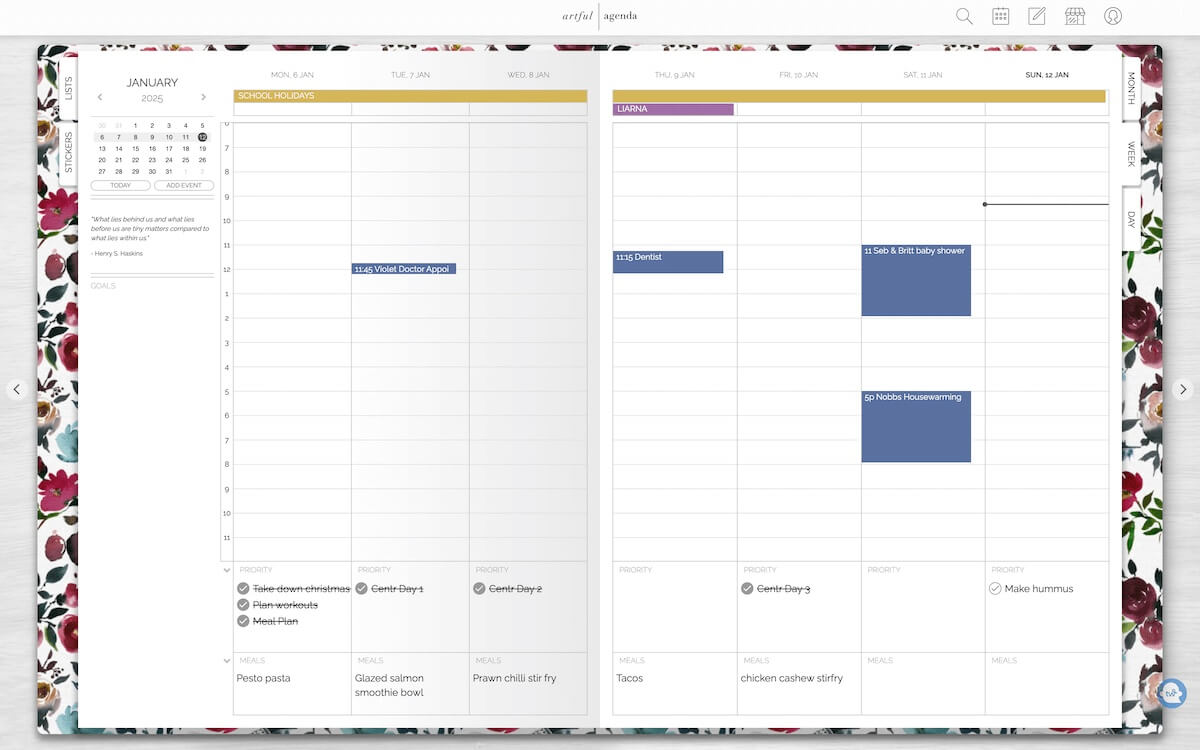
One recent addition to my planning system is Artful Agenda which is a digital planner that works very similar to a paper planner, but with the convenience of being synched across all devices. It’s still pretty with planner covers and stickers and it works with your existing calenders, such as Google Calendar.
We have a family Google Calendar view where we can each add important dates and events, while also being able to see at a glance what is coming up for other family members.
You can trial Artful Agenda for 2 weeks for free. Use code RH1210621.
Bullet Journals
If you want a highly personalized approach, bullet journaling allows for a creative mix of goal setting, habit tracking, and to-do lists. It can serve as both a planner and a space for reflection.
- Great for: Creative individuals who want to combine organisation with mindfulness and self-expression.
- Best way to use: Customise your layout to track your yearly, monthly, and weekly goals, habits, and tasks.
Get my huge 100+ page printable bullet journal bundle:
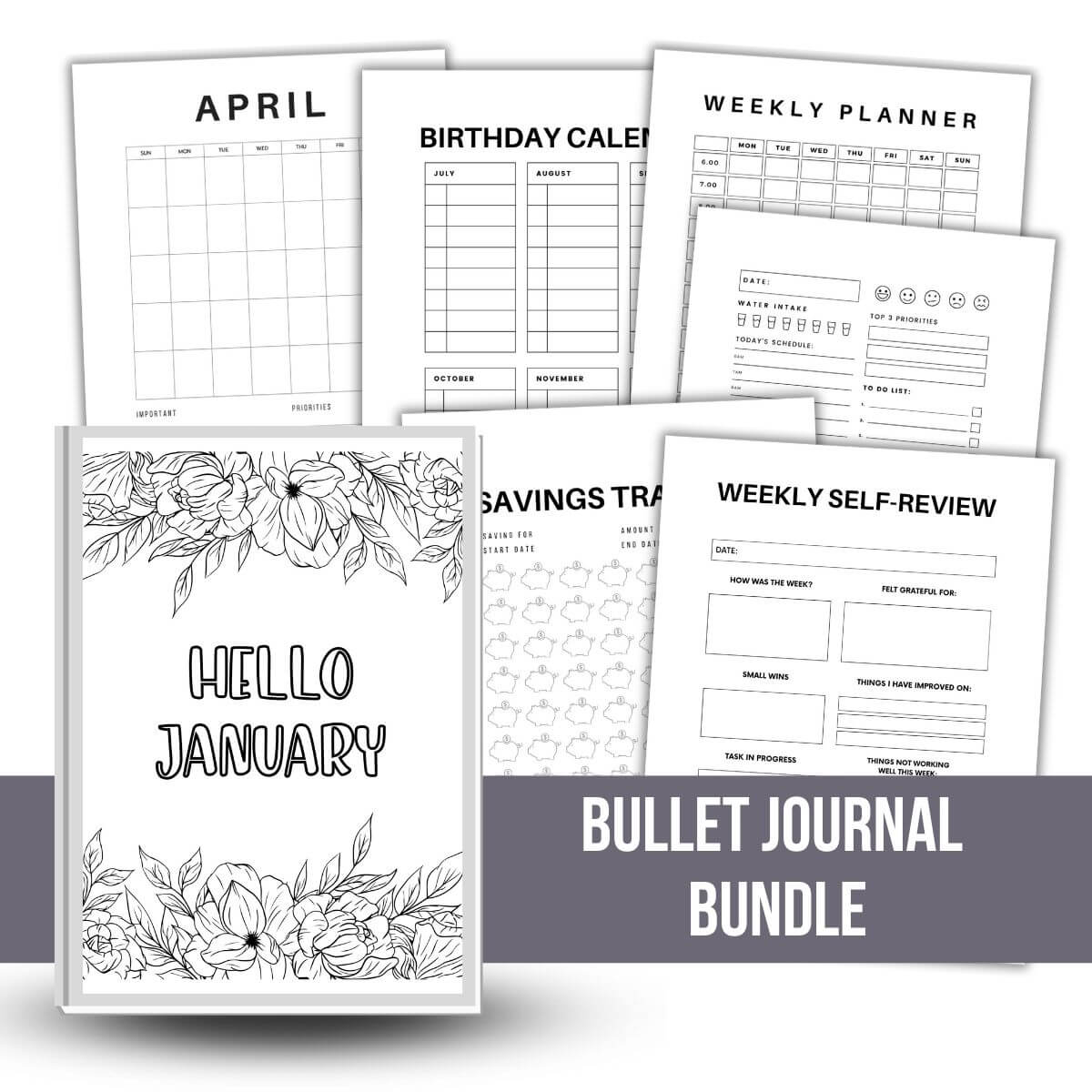
Project Management Systems
A project management system is more typically for workplace organisation but it’s worth mentioning. It kind of fits in the digital app section but deserved a place of its own. These systems allow you to add tasks, appointments, and projects but they also allow for collaboration, making them fantastic for workplaces or anyone who has their own small business with employees.
- Great for: Managing tasks, appointments and projects for work and business.
- Best way to use: Use it as a central hub to manage projects and collaborate with others.
Hybrid Planning Approach
A hybrid planning approach utilises 2 or more of the above planning formats.
While I was once entirely a paper planner user, these days I have adapted to a hybrid approach. I still use a daily planner but find that I mostly refer to the monthly calendar view and habit-tracking features and use it for personal to-do list items, like cleaning tasks or school activities.
I use a free Asana account for project management which helps me to set deadlines for my work projects and also anything that I want a timely reminder for in my personal life.
And, as I mentioned above, I also use Google Calendar shared with my husband for personal events and appointments.
Hopefully, you already have some idea what works for you. If not, spend a little time trying different formats out and see what feels natural. The first year I got a paper planner, I opened it maybe 3 times. It wasn’t the right format for me and that can take time to discover.
Step 3: Set Specific Goals for the Year
The next year is full of potential, and the best way to capitalise on it is by setting clear, specific goals. The more detailed and measurable your goals, the easier it is to track your progress.
- Start with a vision: Think about what your ideal year would look like. What big things do you want to achieve? Consider goals for personal growth, career, health, and relationships.
- Break goals into smaller steps: For each major goal, write down smaller action steps. For example, if your goal is to run a marathon, your action plan might include weekly training sessions, finding a coach, or researching the best gear.
- Set deadlines: Assign deadlines to each action step. Planning the entire year might seem overwhelming, so focus on quarterly goal reviews. This allows you to break the year into manageable sections and adjust your plan as needed.
Some fun ways to identify your goals and get really specific on them are to do a brainstorming, free-writing activity about how you want to feel and what you want to have achieved before the end of the new year. Or try making your own vision board of all the things you want to focus on.
Step 4: Set Up Your Planner Step-by-Step
Once you’ve selected your planner system and defined your new year goals, it’s time to get set up. This process mostly covers how to set up a planner, but you can adapt this into your digital or project management systems too.
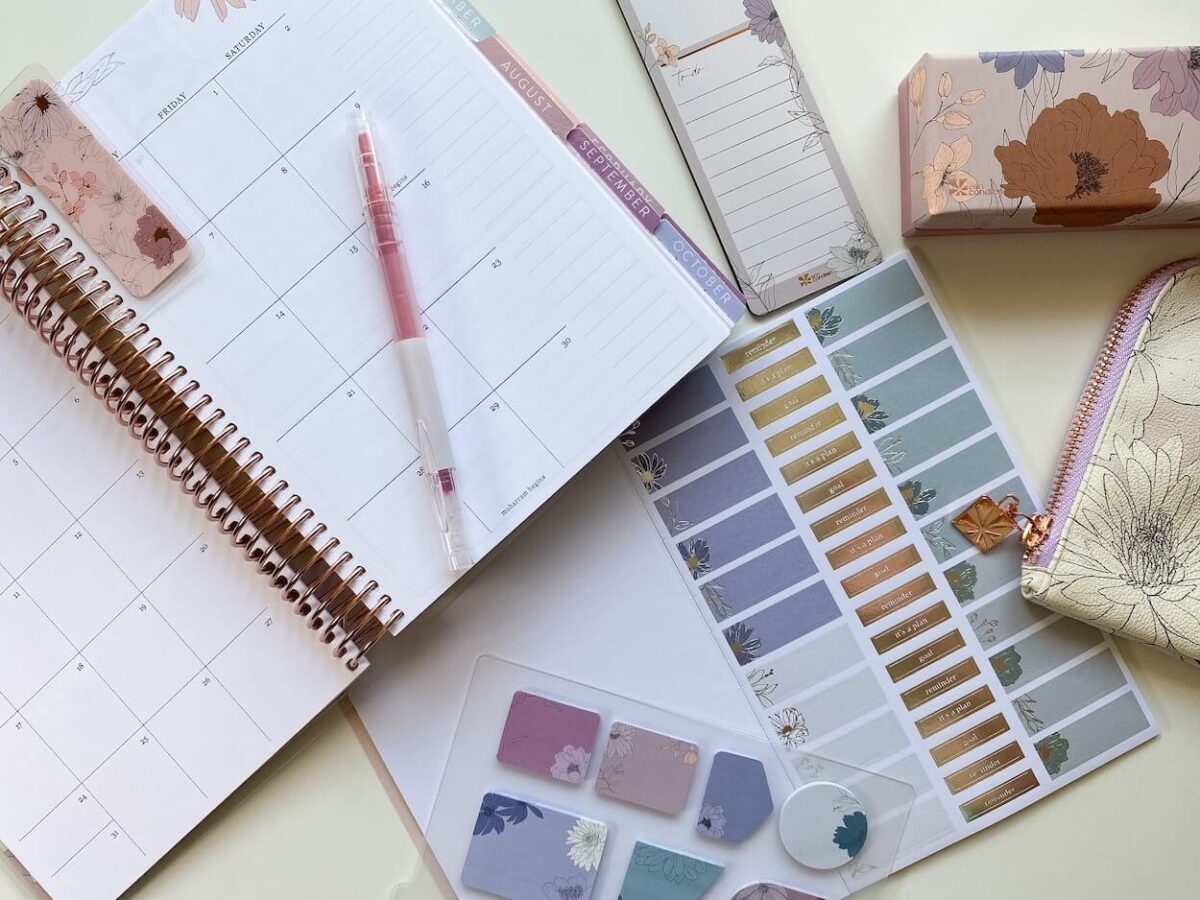
Here’s a detailed process for organising your planner to ensure it’s a tool for success:
- Yearly Overview
- Include a section for the entire year where you list key dates, including birthdays, anniversaries, holidays, and any pre-scheduled major events.
- Add a theme word for the year (e.g., “Growth,” “Balance”) to keep you focused on a broader intention.
- Add your yearly goals – if your planner doesn’t have a goal section, use a blank page. Writing down your goals is proven to make it more likely you will achieve them!
- Monthly Layout
- Add in any upcoming events you already know you have on, such as weddings, milestone birthday celebrations or travel plans.
- Set your monthly goals for January. What do you want to achieve, both personally and professionally? Break down larger goals into smaller milestones.
- Use your monthly section to note any recurring appointments or deadlines.
- Weekly and Daily Pages
- For weekly planning, create a to-do list and prioritise tasks based on deadlines or importance. This will help you manage your time effectively.
- In your daily section, jot down three top priorities for each day. This keeps you focused on high-impact tasks and avoids getting bogged down by smaller, less urgent items.
- Unless there is a specific thing you want to do each week that you know ahead of time, like Wednesday cleaning day, for example, you can wait until closer before you fill these sections in.
- Habit Trackers
- Add a habit tracker to monitor new habits you want to develop. It could include exercise, meditation, journal writing, or even drinking more water. Tracking daily habits is a great way to stay motivated.
- Quarterly Reviews
- Set aside time every three months for quarterly reviews. Reflect on your progress, assess your goals, and make adjustments where needed. This is a great time to celebrate wins and recalibrate where necessary.
Step 5: Advanced Planning Techniques
Effective planning isn’t just about writing down tasks. Advanced techniques can help you manage your time better and stay productive throughout the year.
- Time-Blocking: This involves assigning specific blocks of time to different tasks or categories. It’s an excellent way to ensure you’re dedicating enough time to your most important priorities.
- Habit Stacking: Link new habits to existing ones. For example, if you already have a morning routine of drinking coffee every morning, add 5 minutes of journaling or build a habit of doing 10 squats each time you brush your teeth.
- The Pomodoro Technique: This time management method involves working in short bursts (usually 25 minutes), followed by a short break. It’s a great way to maintain focus without burnout. I use a Pomodoro app whenever I need to stay really focused and productive!
Step 6: Stay Motivated Throughout the Year
It’s easy to lose motivation as the year progresses, but here are some tips to help you stay on track and make the most of the blank pages ahead:
- Use your vision board: Revisit your vision board regularly to stay inspired and connected to your goals.
- Reflect often: At the end of the year or during quarterly reviews, celebrate your progress and make notes of what needs improvement. Reflecting often keeps your goals top of mind and helps you see how much time you have left to achieve them.
- Stay flexible: Life happens, and sometimes plans change. Adapt your planner as needed. Flexibility is key to long-term success.
Overcoming Common Planning Challenges
The biggest challenge for New Year planning is using a system that does not work for you.
I’m not going to sugar-coat it. It can be hard to find the right planning system. And even once you do find one that you love, you might find that it evolves in time. This is awesome, so long as you let the evolution happen.
Just because your best friend uses the cutest paper planner with the most adorable planner stickers and everything is colour-coordinated and she never misses a deadline does not mean that you are going to find this system working for you. We can want it to, but we can’t force it to happen.
Embrace the planning method that feels most natural for you and don’t be scared to experiment with other methods sometimes.
New year planning isn’t just about setting goals for the sake of achieving them. Without having the right intentions, our plans will fade away. Planning for the upcoming year can feel like a big task, but by breaking it down into these actionable steps it will help make sure that your efforts are directed toward making it your best year yet.
What is your preferred planning style?
Here are some more resources you might like:

